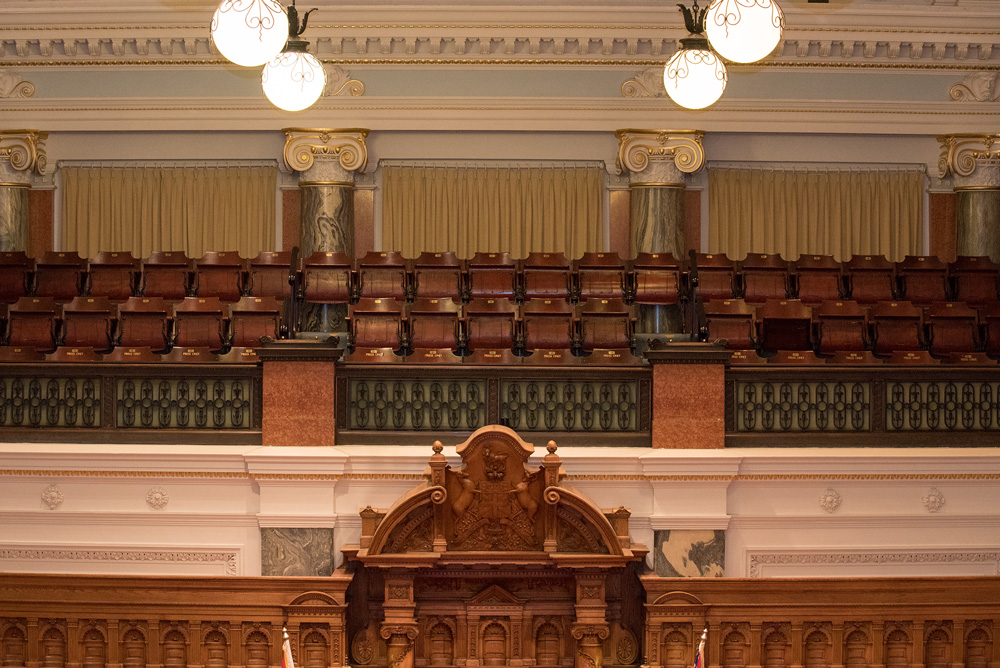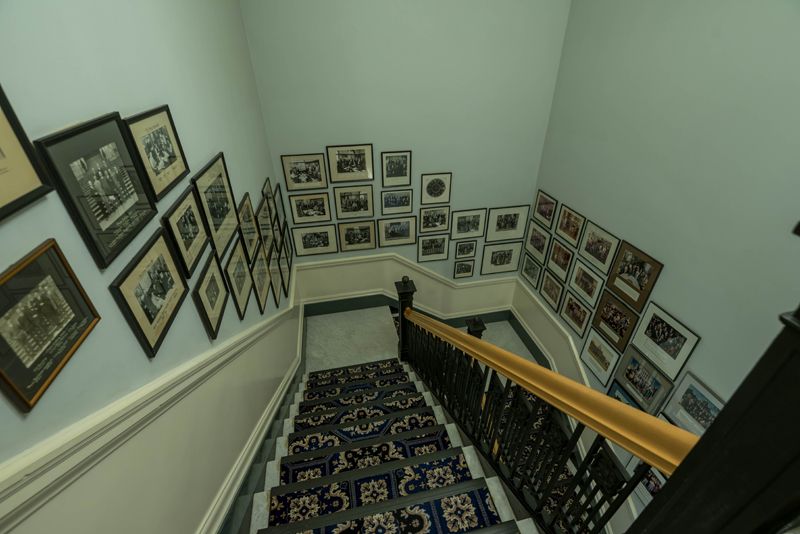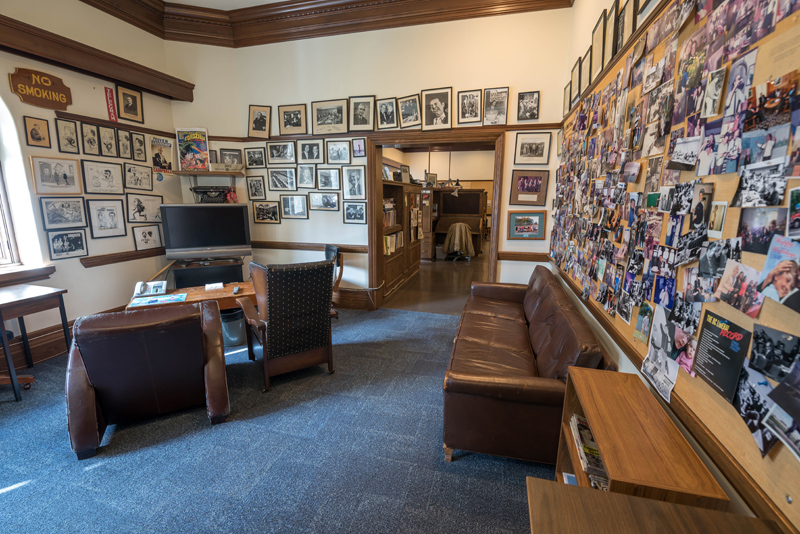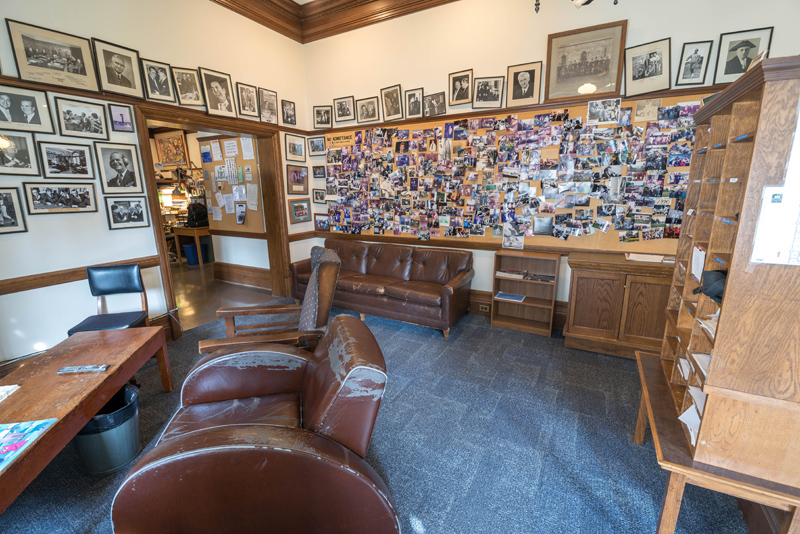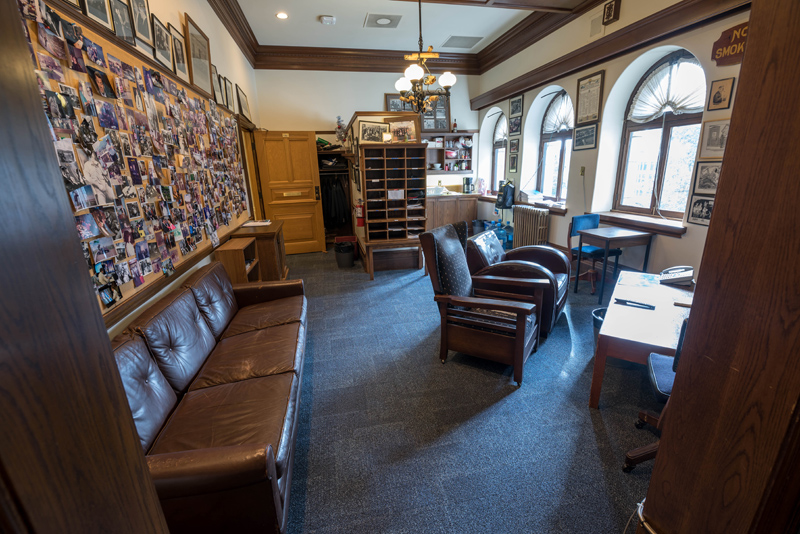The freedom of the press to publish reports of parliamentary debates and to comment on the actions of political leaders was won only after centuries of struggle in Great Britain. Until the 18th century, parliamentary debates took place in secrecy, since Members feared that they might be arrested for treason if the King or Queen ever learned of criticisms made about them in the Legislative Chamber. However, the public demanded to be informed about legislative proceedings, and the press assumed its role as the eyes, ears, and conscience of the people. Because of this history, the press are seated behind the Speaker in most Commonwealth parliaments: out of sight and, by tradition, out of mind. There, they may take notes without being seen by the Speaker.
Architect Francis M. Rattenbury's original plan for the Legislative Chamber did not include an area dedicated to members of the press. In the first session in the new Parliament Buildings, they sat in the Public galleries. In the second session of 1899, the press were actually allowed to sit on the floor of the Chamber so that they could hear the Members properly. Finally, a dedicated press gallery was built above and behind the Speaker's Chair.
Literally, the Press Gallery is the area above the Speaker's Chair where reporters sit while covering a sitting. However, the term "Press Gallery" is most often used to refer to the group of political reporters who are based at the Parliament Buildings and cover provincial and legislative news.
The third floor offices of these Press Gallery members are rich in journalistic memorabilia and are decorated with dozens of historical photographs. Press Gallery members can now observe the debates of the Assembly from the relative comfort of their offices by watching the live televised proceedings of the Assembly, broadcast throughout the province by Hansard Services.
